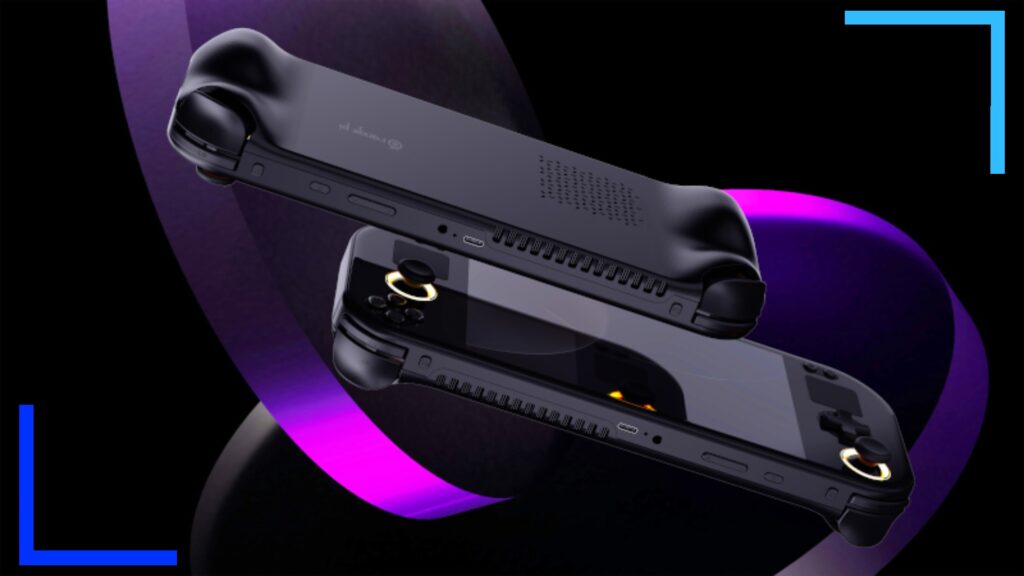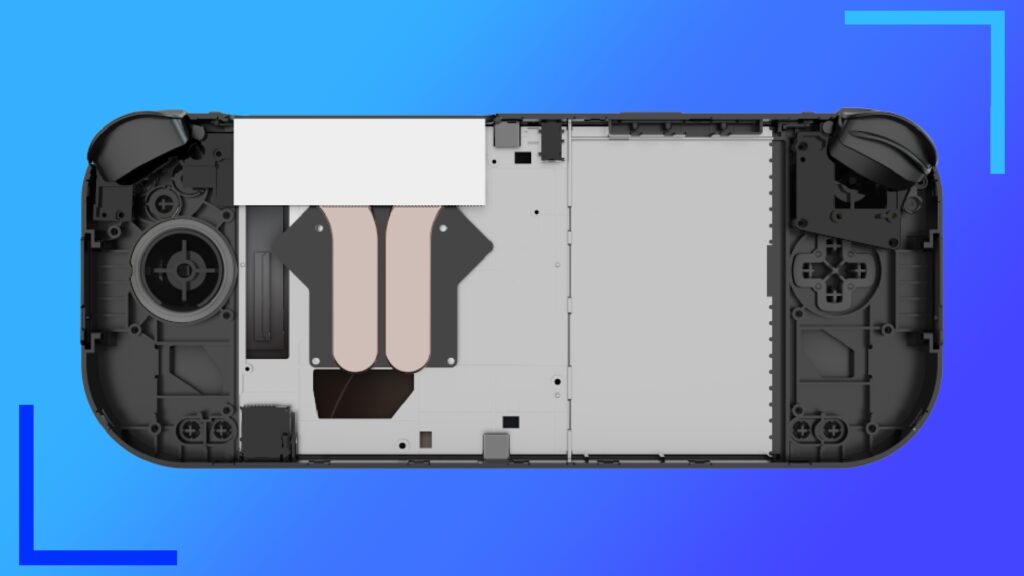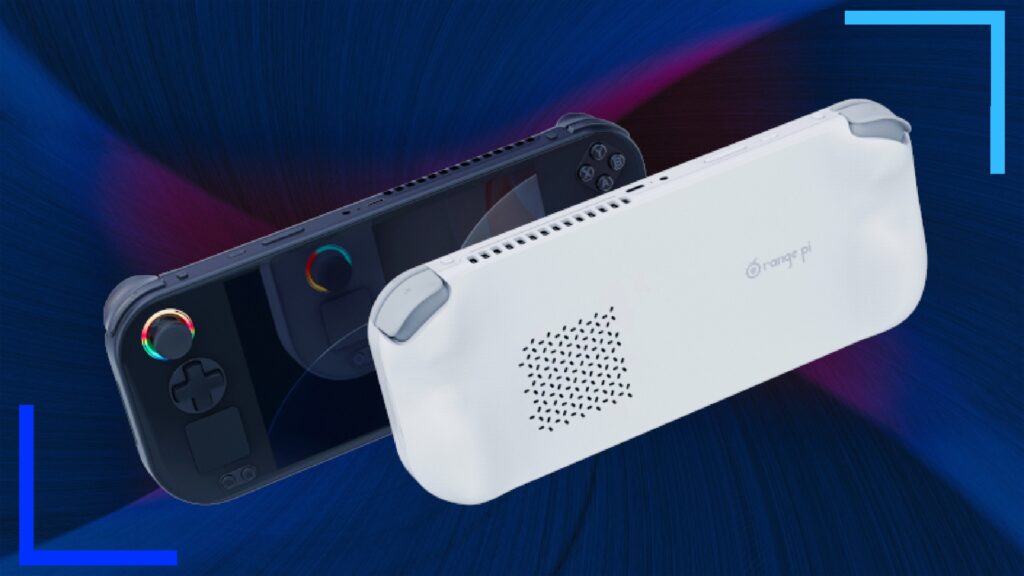The Orange Pi Neo is a gaming handheld that uses the Manjaro version of Linux as its main operating system. It’s comparable with the Steam Deck in that regard, only the Orange Pi Neo is closer to the ASUS ROG Ally in terms of power.
How does the Orange Pi Neo stack up in a world with so many other options? Read on to learn more about this forthcoming handheld.
Specs Explained.

What separates the Orange Pi Neo from the Steam Deck is the use of the AMD Ryzen 7 7840U chipset. That processor is faster than the Steam Deck’s and should provide a solid performance boost if everything works as it should. As I mentioned above, it’s more comparable with the Ryzen Z1 Extreme found in the ROG Ally than anything else.
For the operating system, the Orange Pi Neo uses Manjaro Gaming Edition – a Linux-based software that somewhat resembles Windows. As it runs Steam, the likelihood is you’ll be able to use Steam’s new and improved Big Picture Mode if you’re looking to avoid a more PC-centric interface.
The screen of the Orange Pi Neo takes the Steam Deck’s 16:10 aspect ratio and improves on it. Instead of being capped at 800p, the Pi Neo boasts a resolution of 1920 x 1200 at 120 Hertz. That said, it’s worth noting not that many newer games will be able to run at a decent framerate at 1200p. Still, for older games, they should shine on the device.
As for storage and RAM, the Pi Neo comes in a host of different options. RAM comes in at either 16GB or 32GB of LPDDR5 dual channel clocked at 7500MHz, while storage is the choice between 512GB or a 2TB PCIe 4.0 NVMe 2280 M.2 SSD.
| Orange Pi Neo Specs | |
|---|---|
| CPU | AMD Ryzen 7 7840U |
| RAM | 16GB or 32GB LPDDR5 |
| Storage | 512GB or 2TB PCIe 4.0 NVMe M.2 SSD |
| Screen | 7-inch at 1920 x 1200 (16:10), 120Hz |
| Brightness | 500nits |
| Connectivity | Bluetooth 5.3, Wi-Fi 6E |
| Battery | 50Wh |
| Size | 259mm by 107mm by 19.9mm |
Features.

As is becoming customary, the Orange Pi Neo comes equipped with Hall Sensing sticks with an RGB light ring at the base. Hall sensing tech is basically the best type of stick to avoid drift in case you were wondering.
What’s most interesting from a user point of view is Manjaro is the first company to copy Valve’s trackpad placements. If you’ve used a ROG Ally or MSI Claw, chances are you’ve noticed how awkward controlling a mouse cursor can be with sticks. Valve’s solution, as you know, was in-built trackpads and they work great. I’m always surprised more companies haven’t followed Valve’s lead. It makes navigating the device so much simpler.
The Pi Neo also features customizable buttons and programmable hotkeys, which are sure to make getting around or taking screenshots a lot easier.
For the cooling solution Manjaro has gone with two copper tubes, copper plating, and fins the company says can cool an area of up to 24,510mm². That’s as well as a turbo fan. The goal here is to keep the internals of the device at a cool 45 degrees and the outer case below 38 degrees when the device is used for long periods of time.
Emulation Potential.
While nothing is set in stone just yet, the Orange Pi Neo should be capable of similar emulation performance to that of the ROG Ally.
In short, that means the device should be able to emulate systems up to Nintendo Switch. The only real limits here are going to be the state of emulators themselves. For example, PS3 emulation isn’t as far along as, say, Dreamcast, so even if you had a high-end PC, there’s only so much that’s going to be able to run.
But, as a general rule, if the emulator in question says it can handle a specific game, that game should likely work on the Orange Pi Neo. In theory, anyway.
Analysis.

The handheld gaming boom continues to grow from strength to strength. Whether it’s ASUS, MSI, Lenovo, or this time Manjaro, Valve really set a trend when it released the Steam Deck.
There is a question of how much more can be done, though. All three of the ASUS, MSI, and Lenovo devices share similar specs, meaning performance isn’t massively different from machine to machine. That means if companies want to steal the headlines, they’re going to need something that is actually different or something at a compelling price. The Orange Pi Neo doesn’t have a price just yet, but if it wants to swim with the sharks, it’s going to have to come in at an acceptable price tag.
There’s also the question of is this device different enough from Valve’s. Both use Linux and while the Pi Neo is the stronger of the two systems, if the price isn’t competitive, there’s little reason to pick it up over Valve’s behemoth.
I won’t be able to give a clear perspective until I’ve tried it, but the potential is there. Users have complained about using Windows 11 on handhelds, and while Linux will remove some Windows functionality like the Epic Games Store, Linux also offers a chance to create something truly fine-tuned for handheld users.
As always, I’ll be sure to keep you all up to date with any of the latest Orange Pi developments as and when they happen.
Thanks to GamingOnLinux for the heads up. Learn more on the Orange Pi Neo website here.

